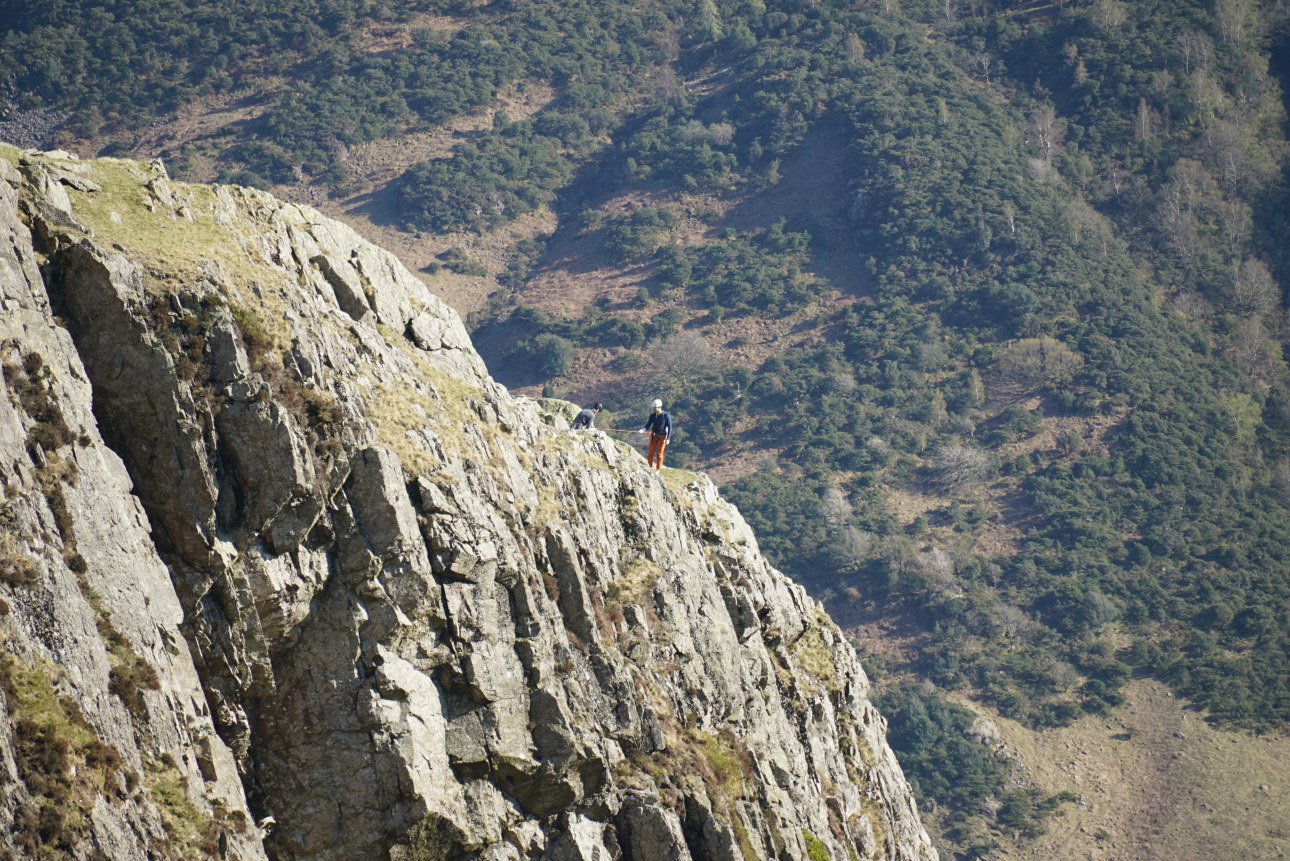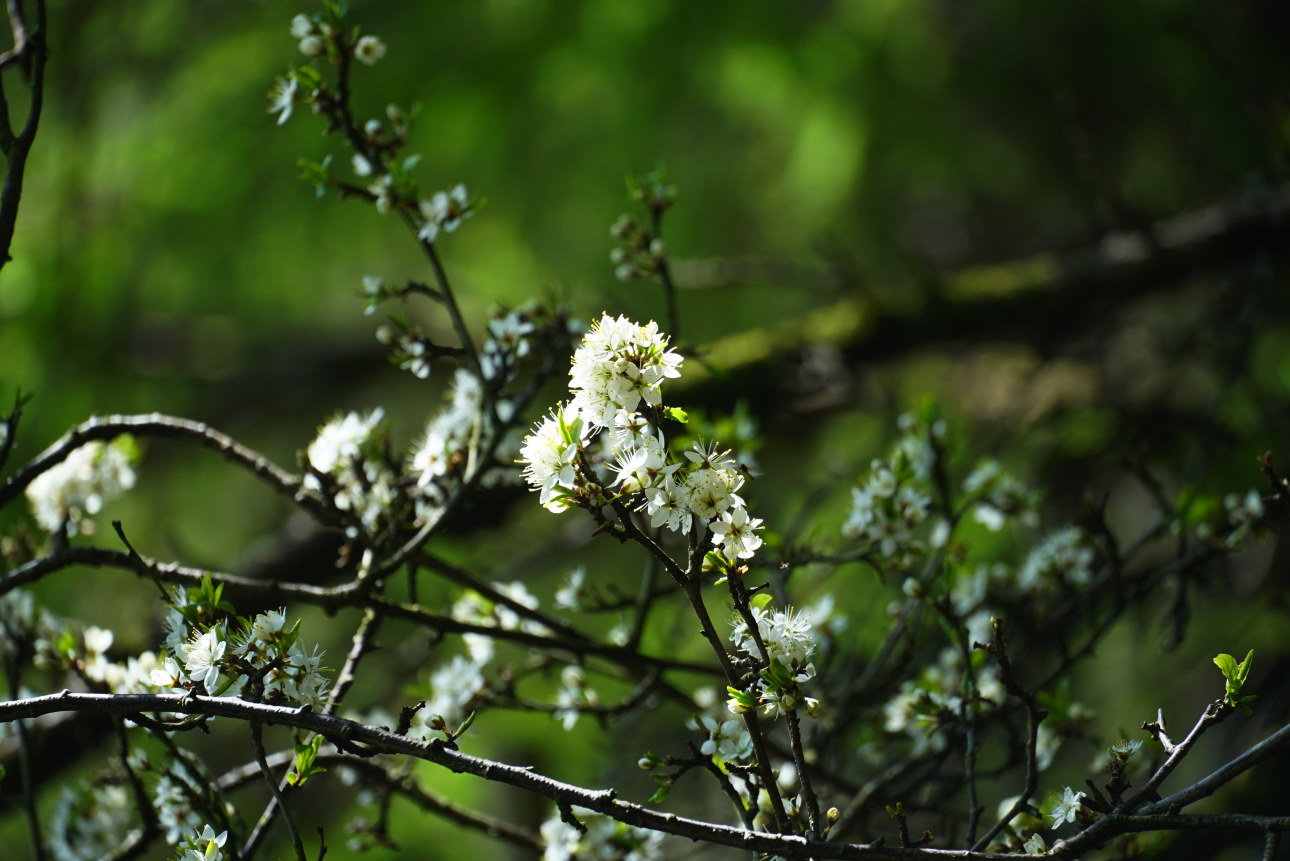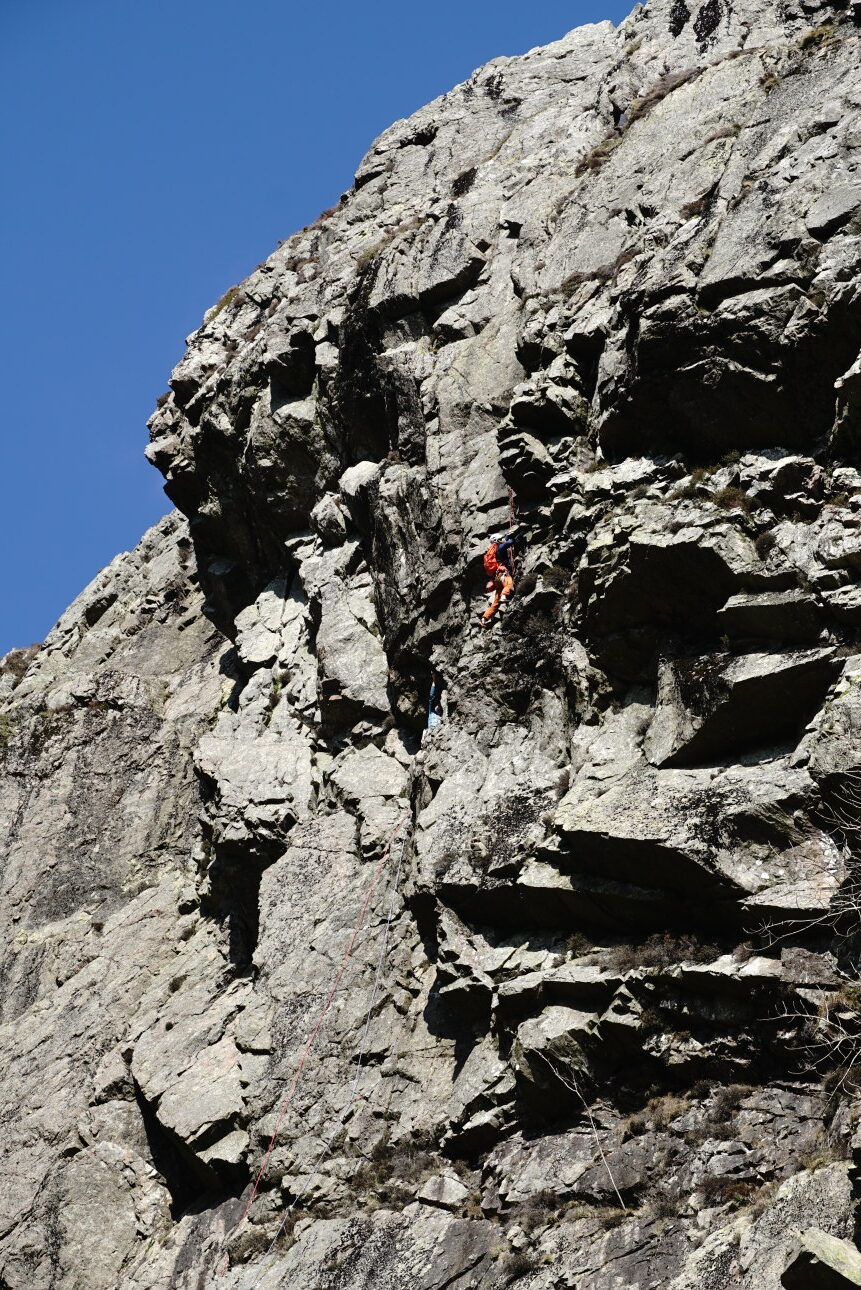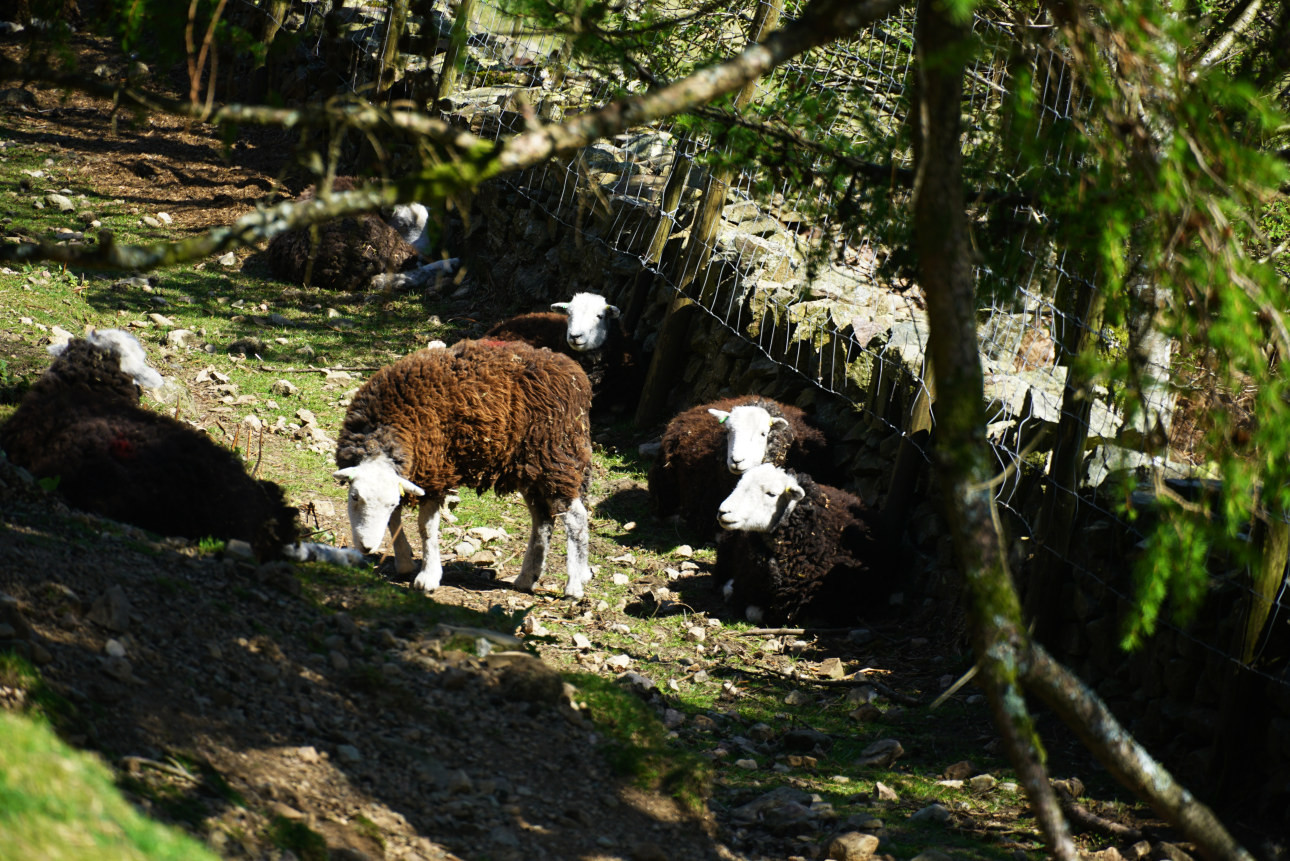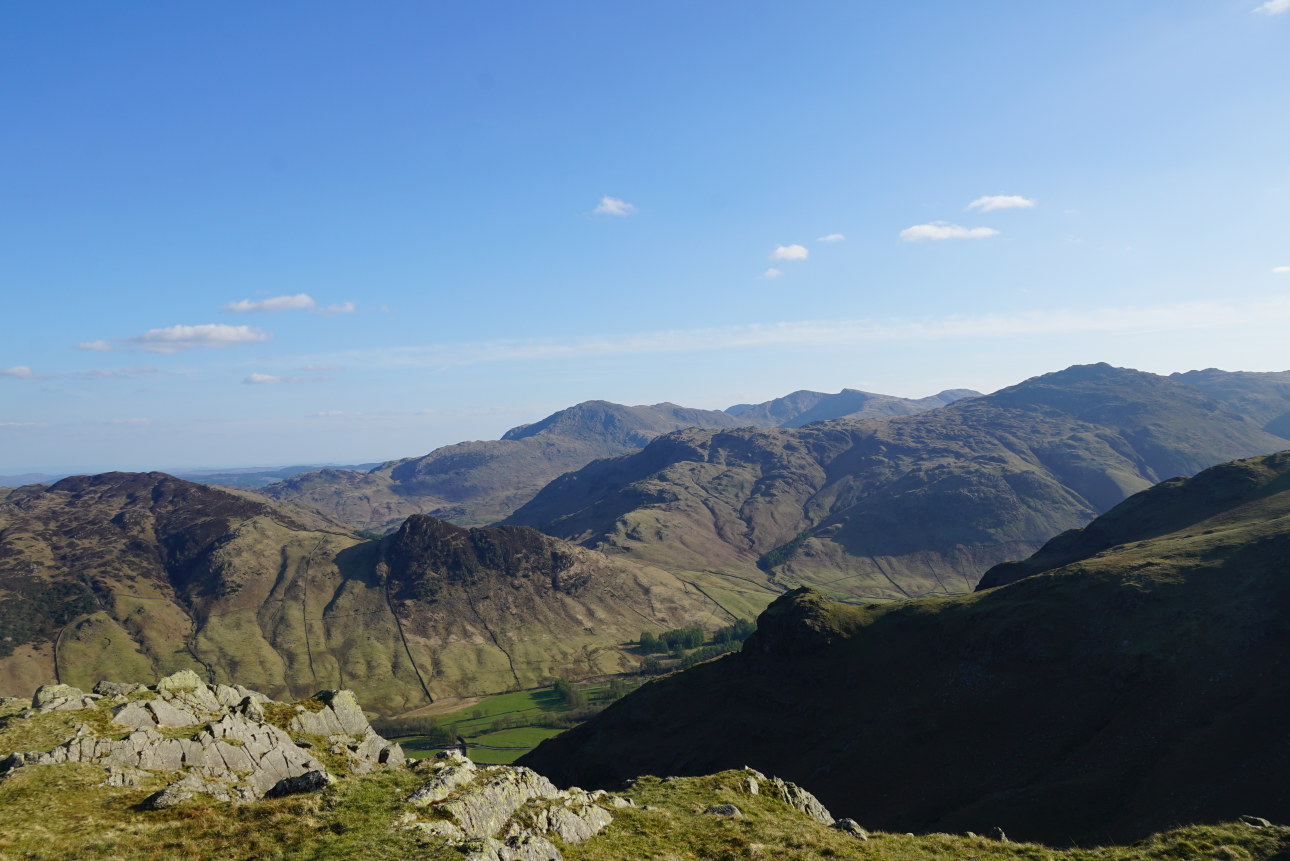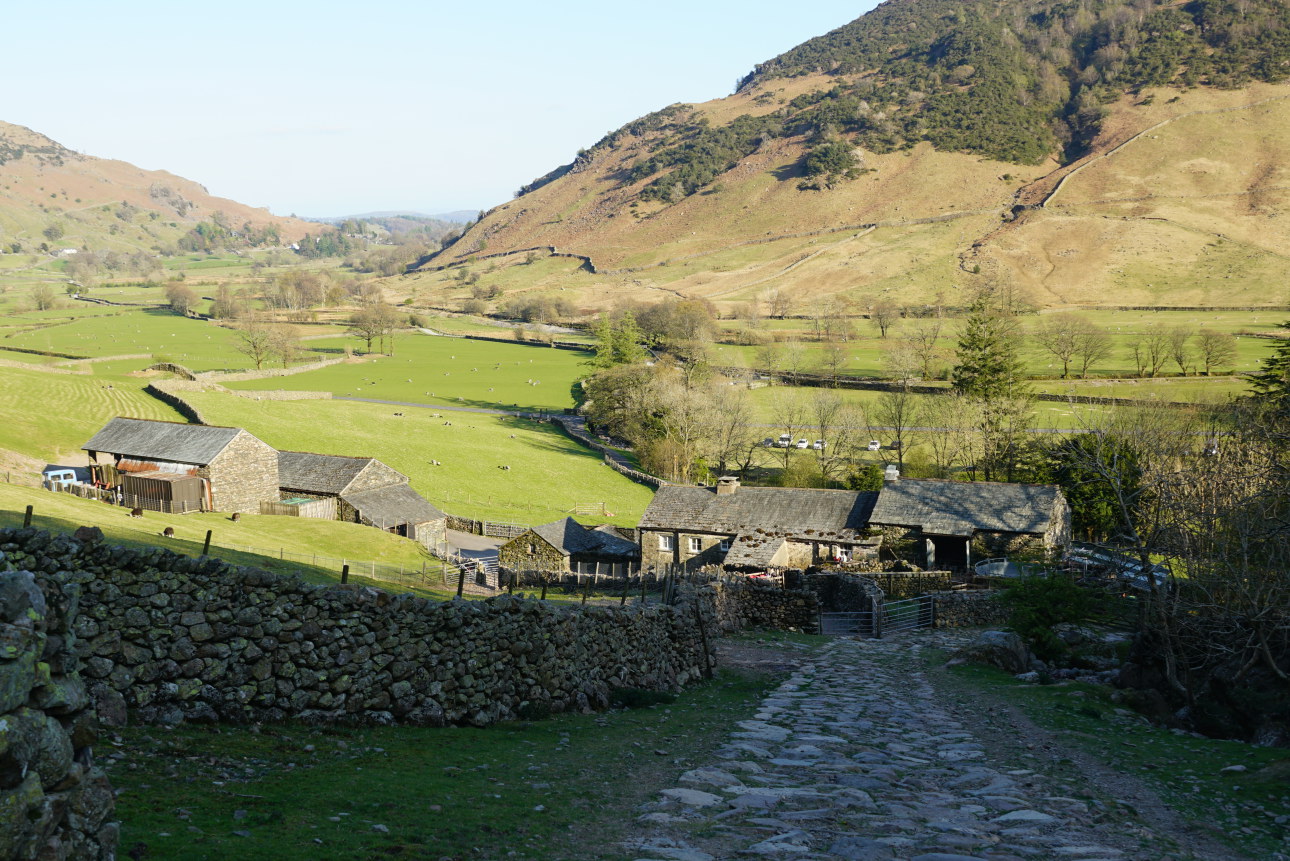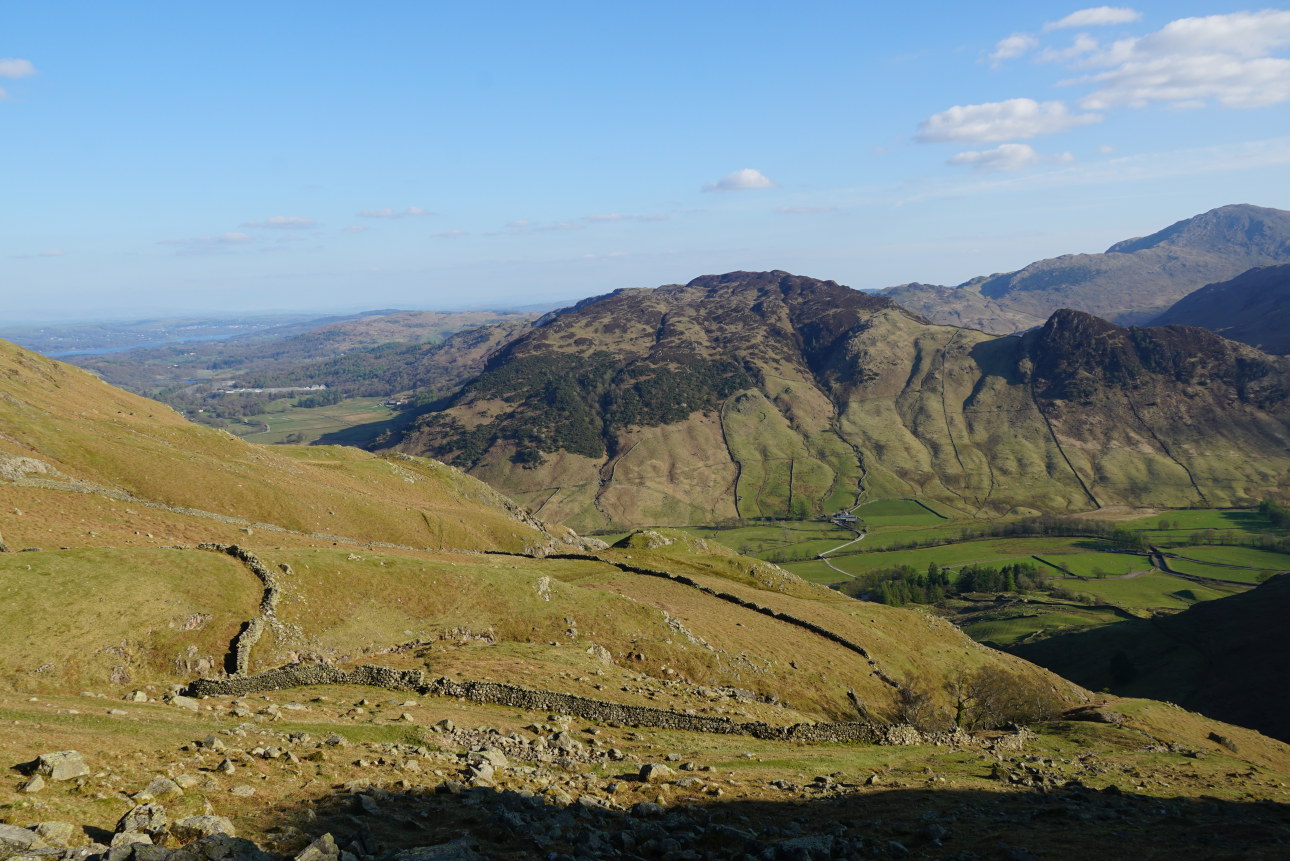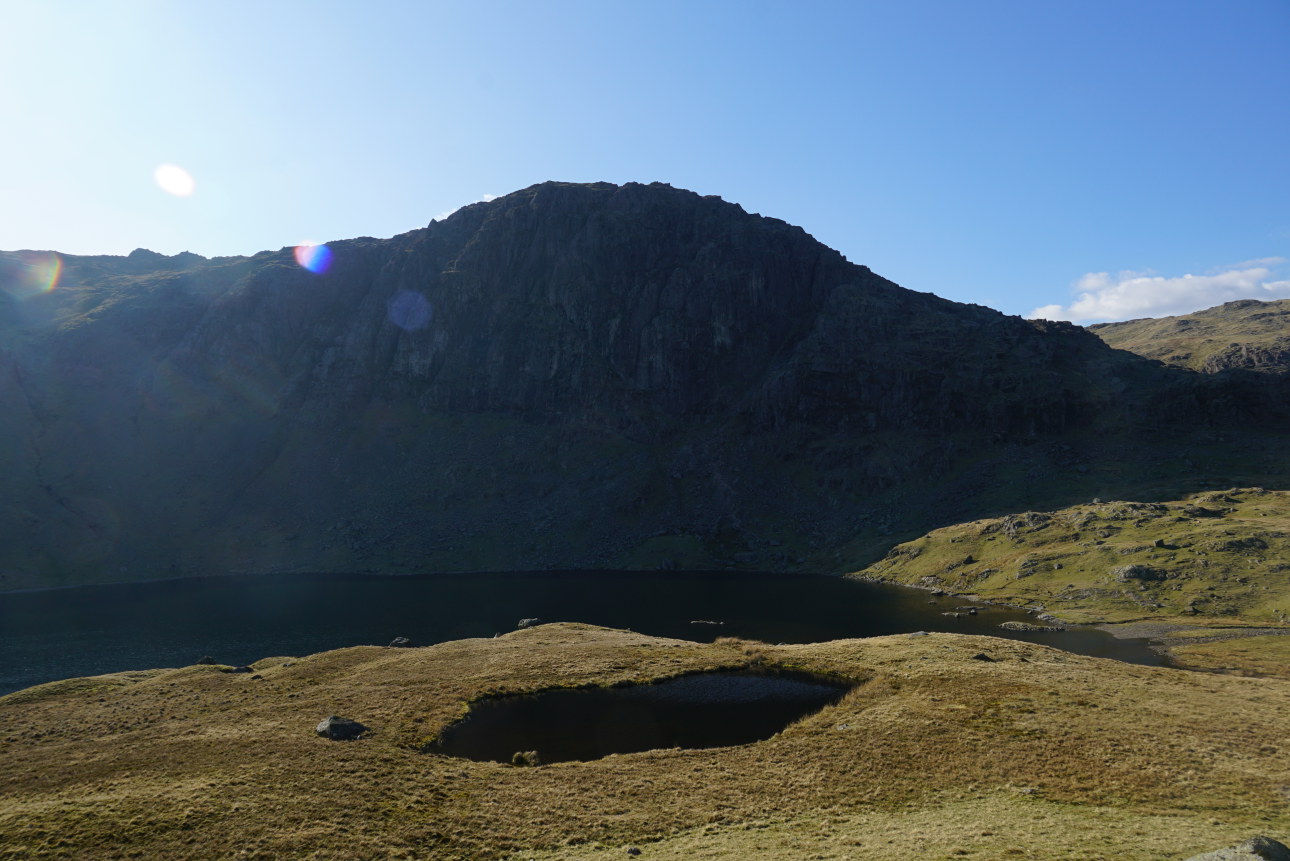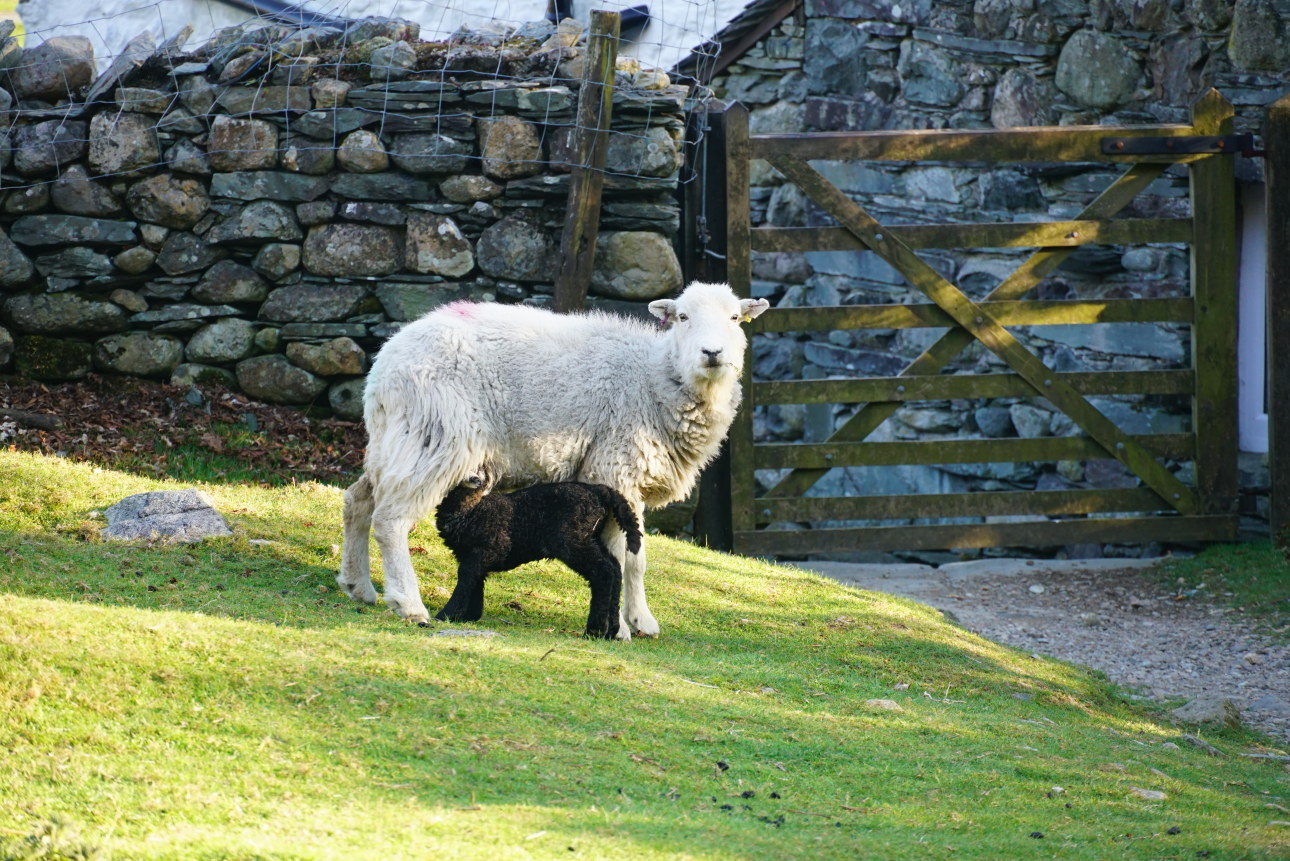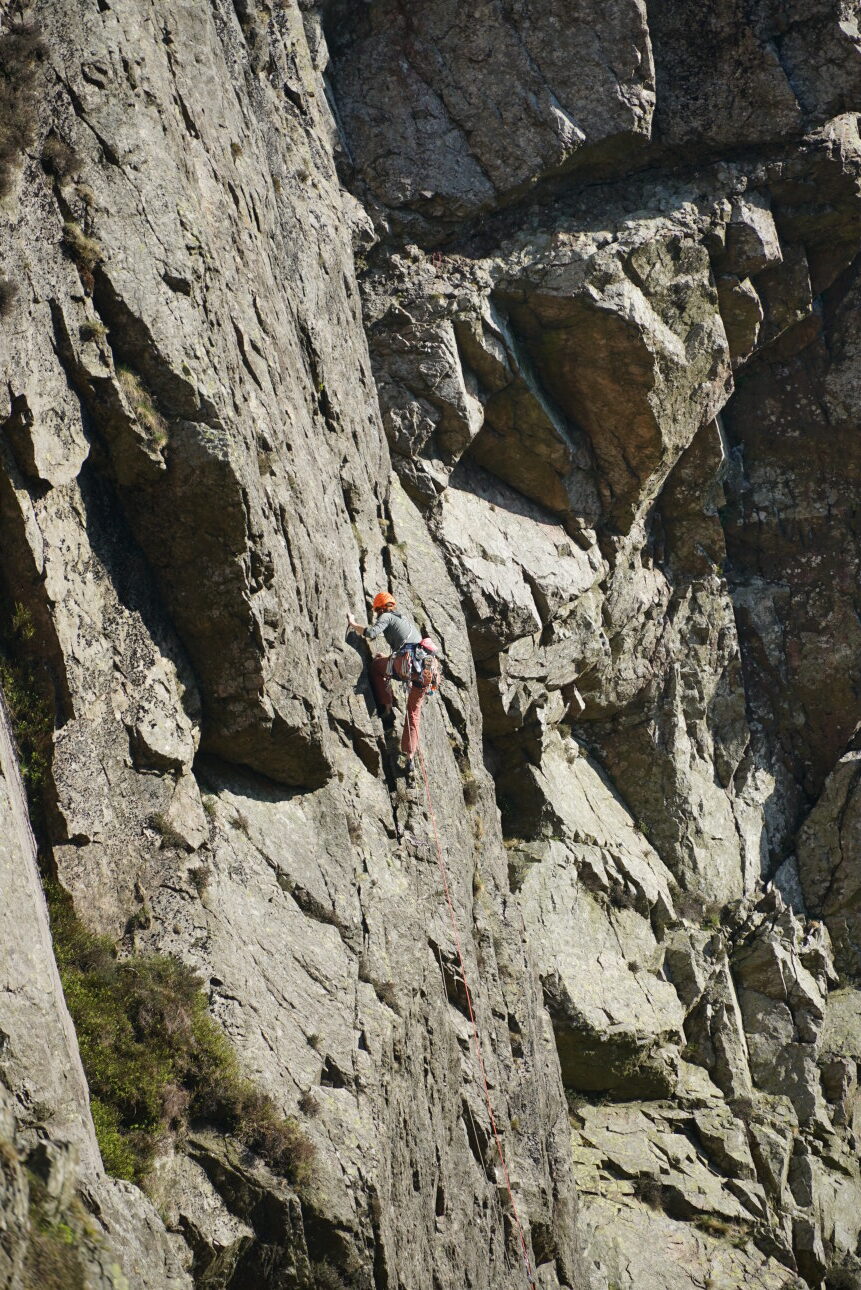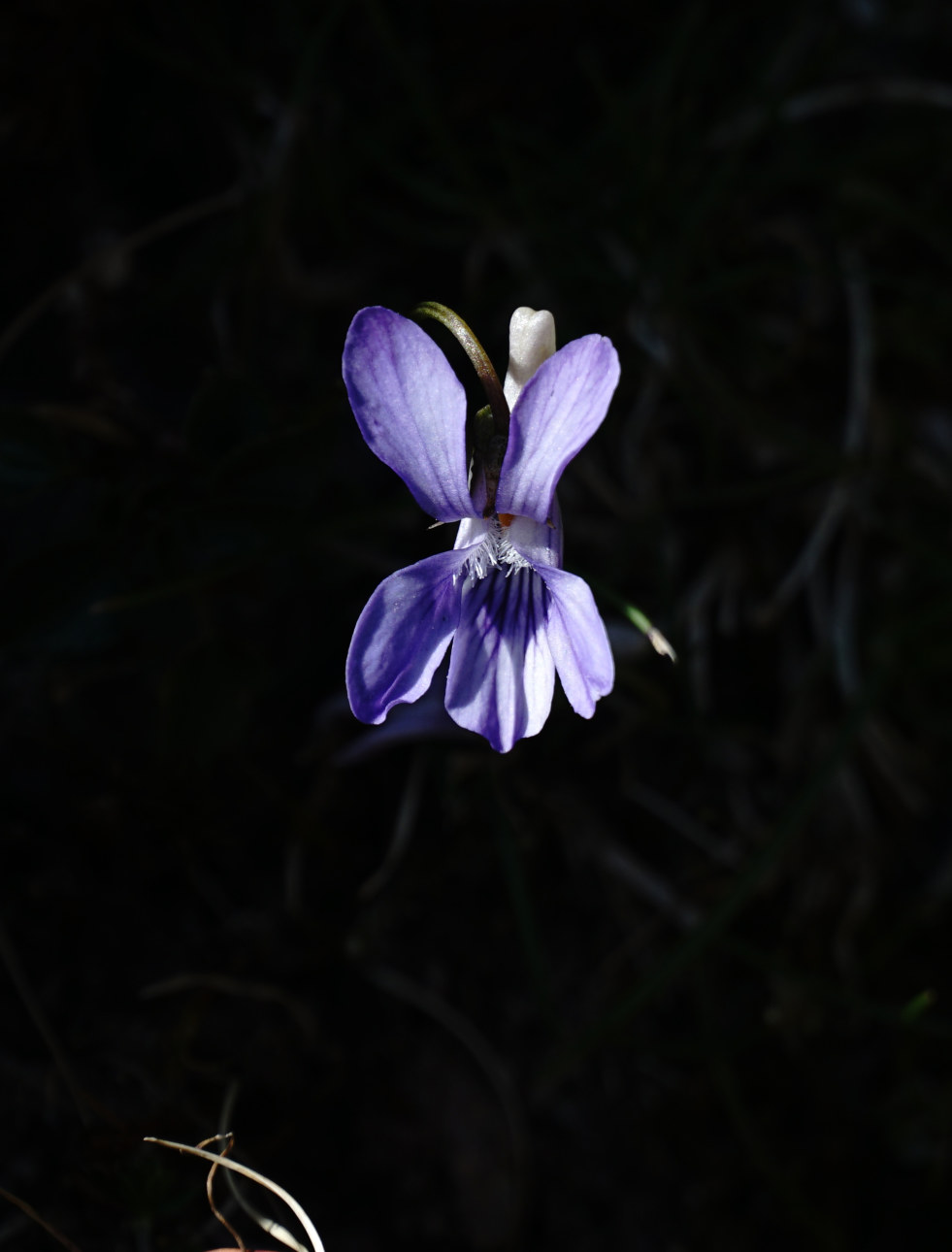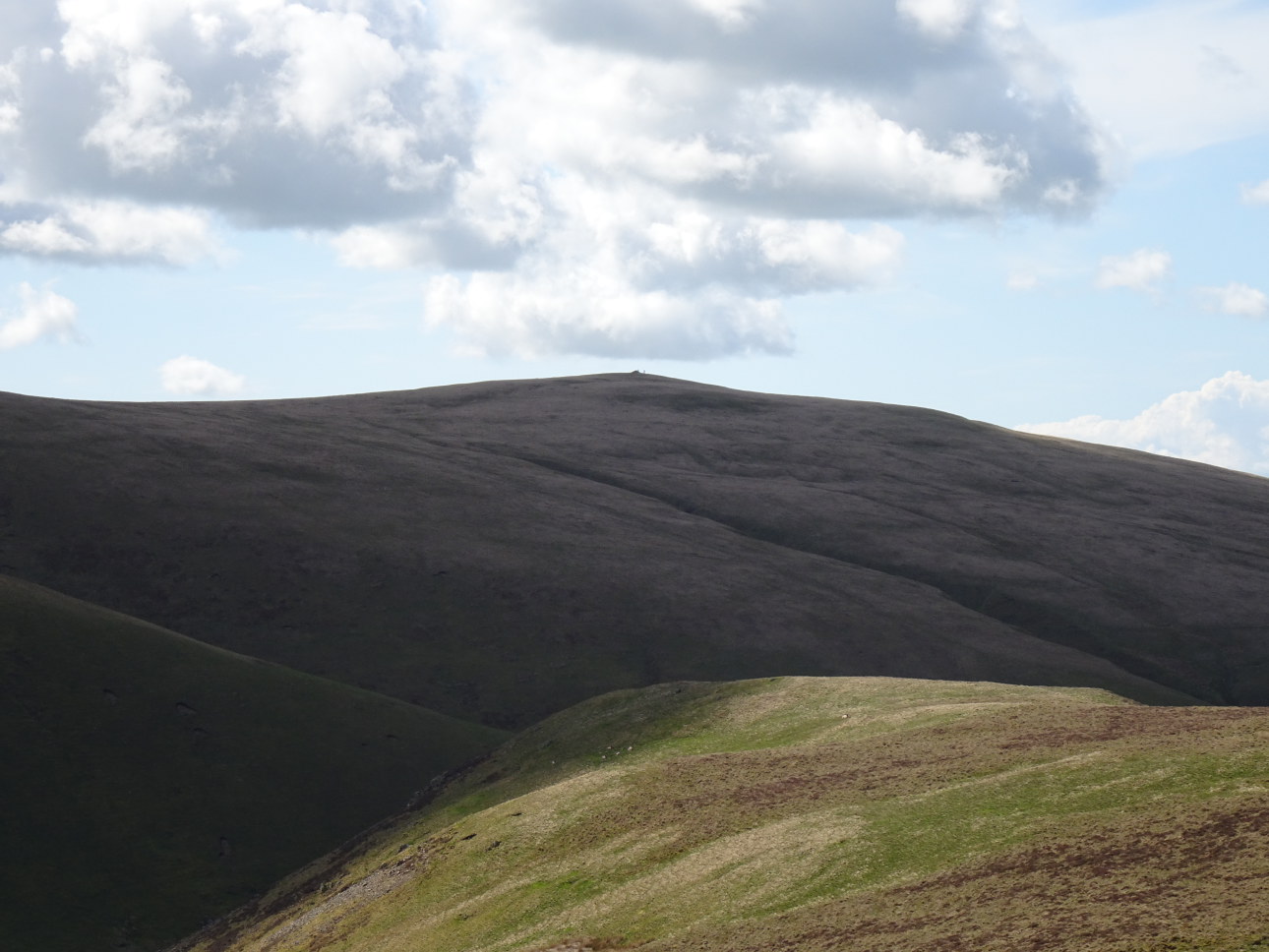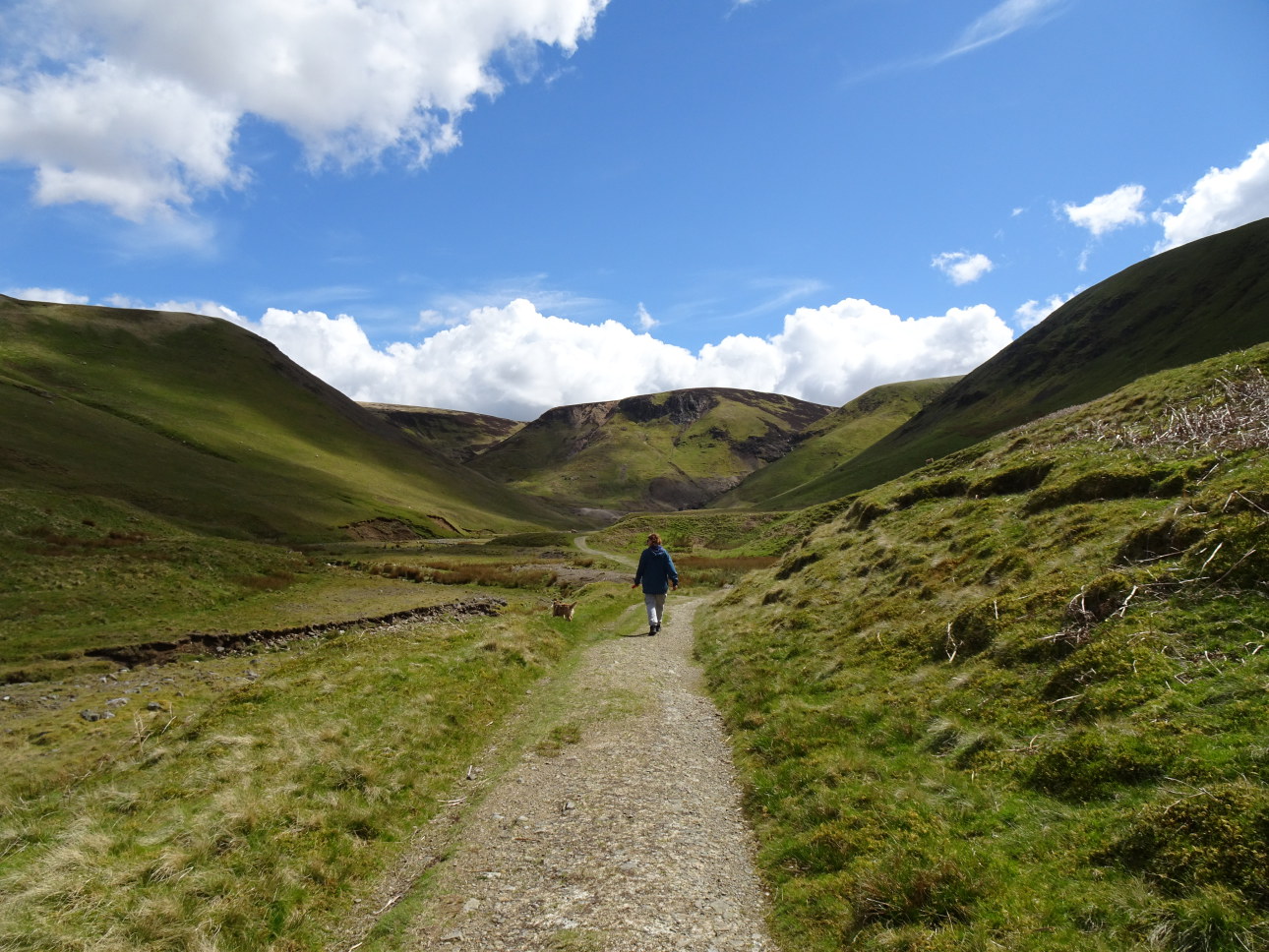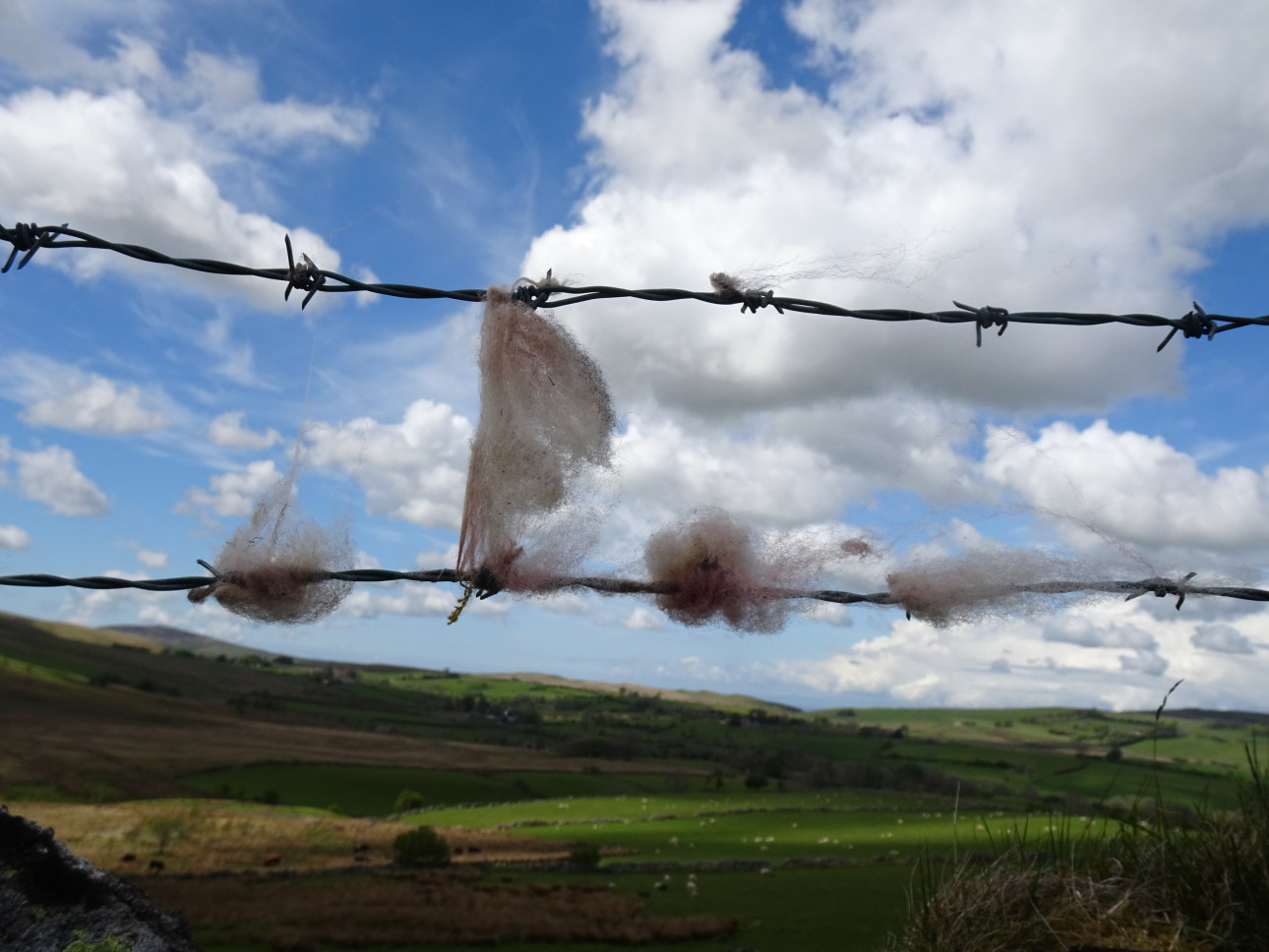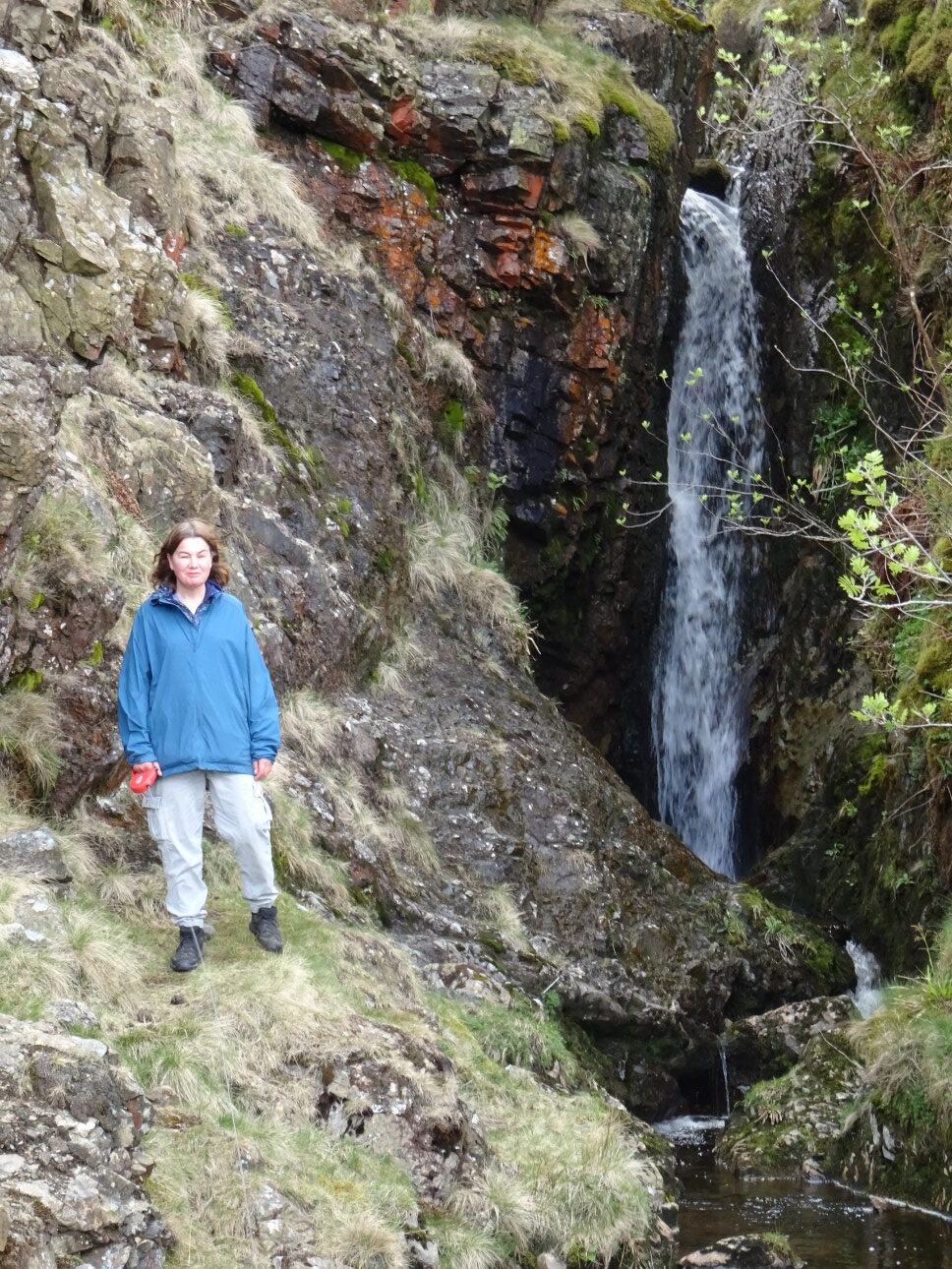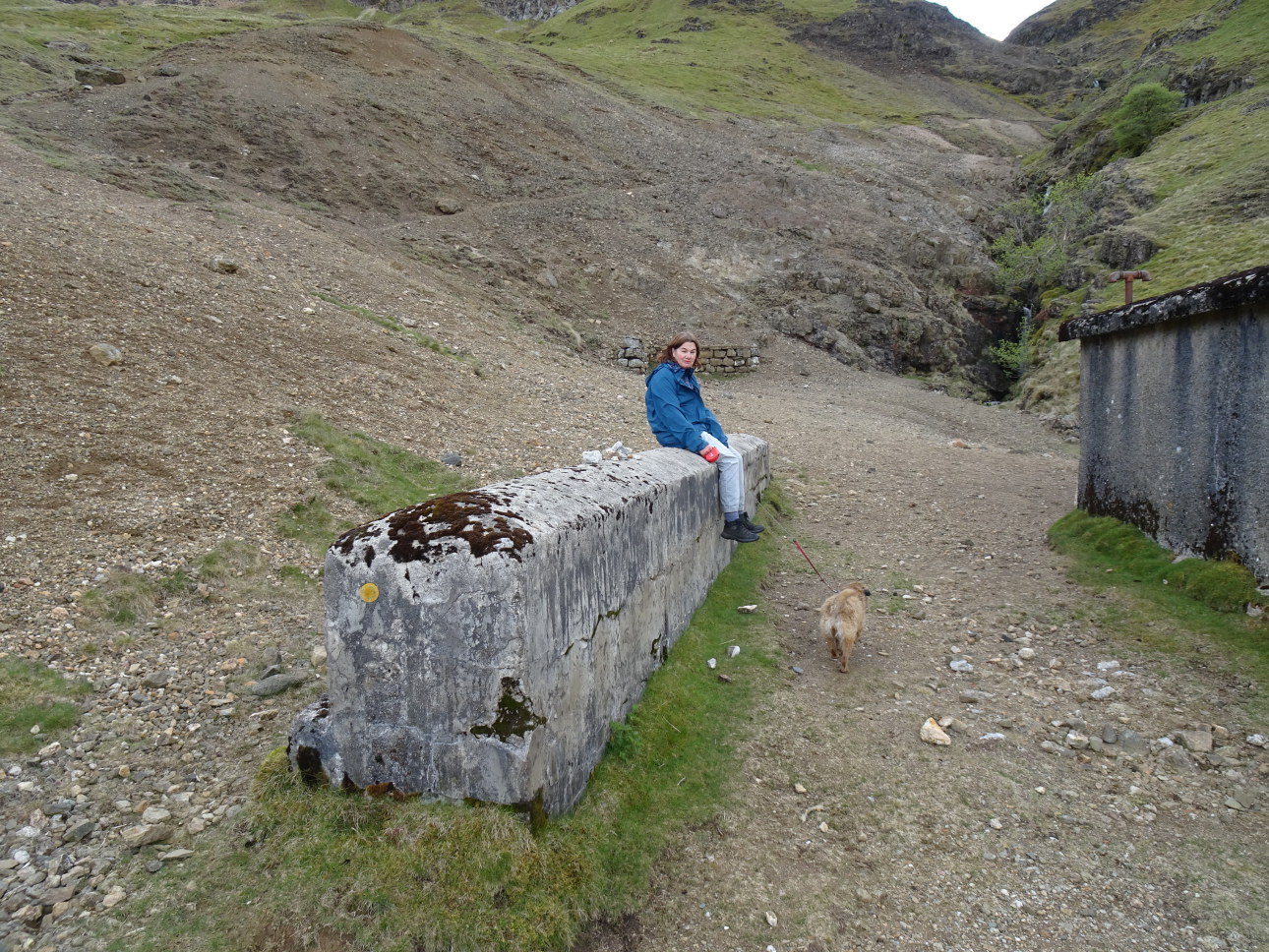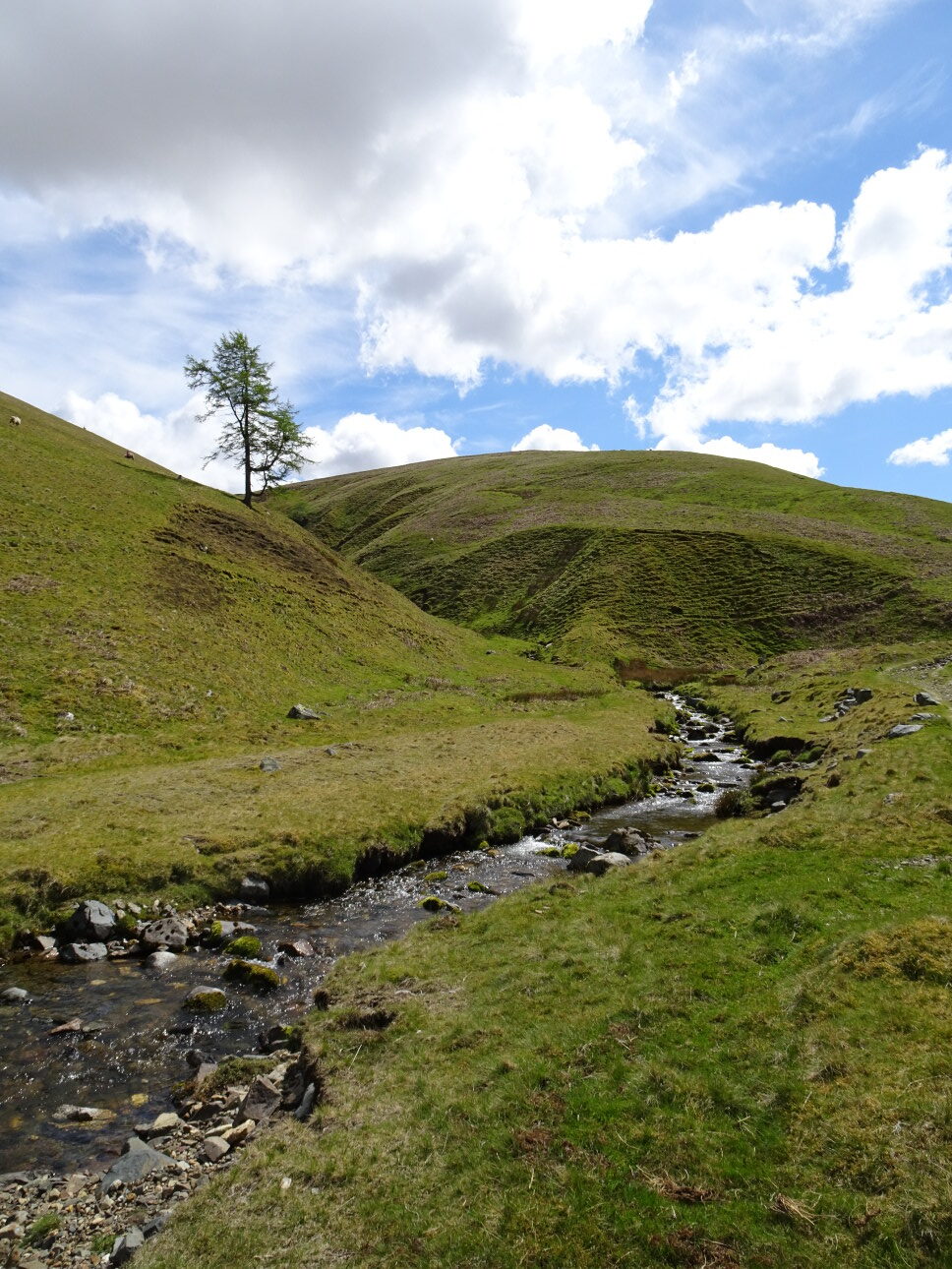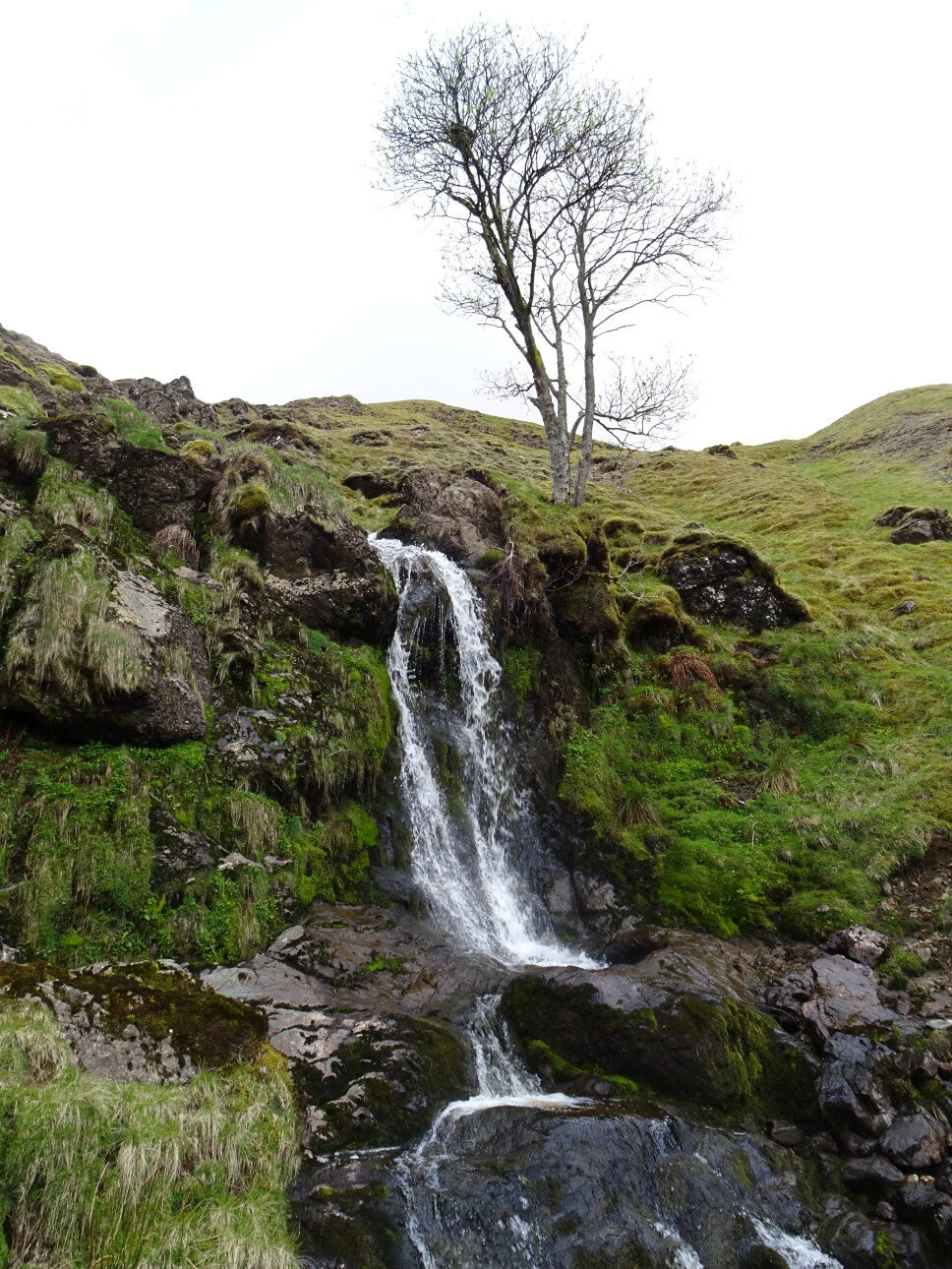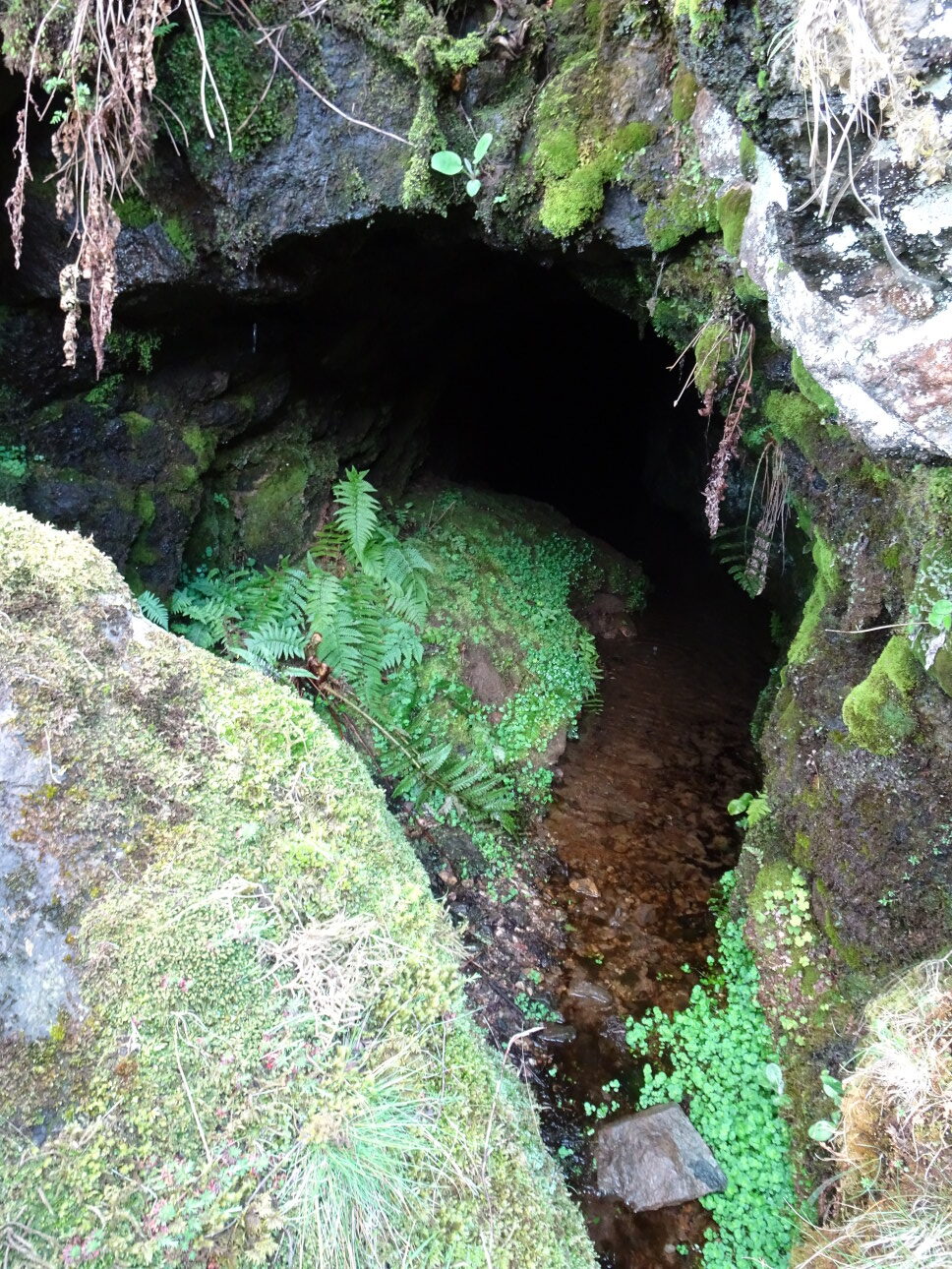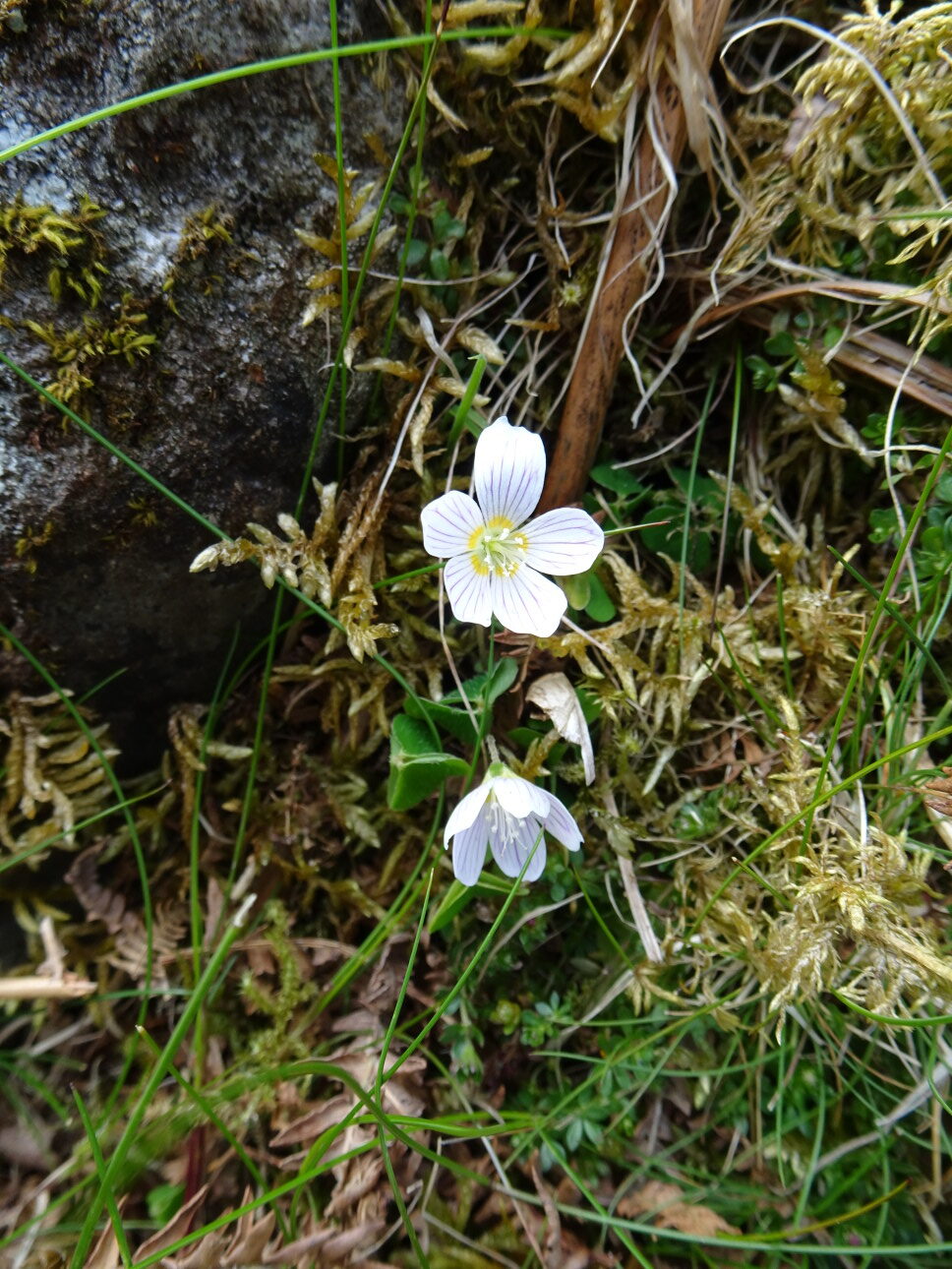Climbers on the top of the crag. Taken at 5:08pm.
Will Birkett and friends were aiming to climb in White Ghyll on Sunday 26th April and so in the afternoon, having finished my jobs and at a loose end, I thought I would see what they were up to. For those unfamiliar with the rock climbing world then White Ghyll, divided onto upper and lower crags and being high and for the most part overhanging, is one of Lakeland’s major rock climbing crags.
The climbing here was extensively developed by my father and Will’s grandfather Jim Birkett. Jim is a climbing legend and took rock climbing to a new degree of difficulty in his day. White Ghyll was opened extensively by Jim in the 1940s and to quote the late, great, and greatly missed, Lakeland writer Tony Greenbank, Jim was to leave a ‘TRAIL OF GOLD’.
I also had an urge to see, and photograph, the tiny purple blue violets which grow in the rocky riverbed beneath the awesome steeps. And this Spring afternoon was perfect with clear light and warming sunshine. I thought that after I had viewed the climbing I would nip over to look at Pavey Ark, from the heights above Tarn Crag, and descend back to Millbeck Farm by the Horse Meadow path – a Dave Birkett route. Dave’s my nephew, also one of the greatest climbers of his generation, who spent much of his childhood helping his other grandfather, Vic Gregg, on Millbeck Farm down below.
The pics capture something of a spring day in Langdale, the awesome steeps of White Ghyll and the little blue violets scattered amongst the rocks.

MAY 22nd 2021
Hardknott Pass is the most difficult and potentially dangerous mountain pass in the UK. To ride or drive it at a popular, busy, time of year can be very demanding. I had just ridden it on my motorbike the evening before an article on it appeared in Motorcycle News. Anyhow I felt so fired up about it I wrote the following letter to the paper. It was published (in a shortened form) with my photo of my bike on the Eskdale side of the pass, on the 5th May 2021 as the “STAR LETTER” and I won some XCP rust and corrosion blocker spray. Exciting times for a motorcycle enthusiast! Here’s the letter and photograph;
HARDKNOTT PASS
Good to read Simon Weir’s piece on Hardknott Pass and Wrynose Pass. Amazingly I had just driven over them the night before MCN arrived through the letterbox. Hardknott is undoubtedly the most difficult and dangerous surfaced mountain pass in the UK. Steve got is spot on really – there’s no margin for error, no safety barriers here, and most of the tourists that drive it in their ridiculous gas-guzzling 4×4’s haven’t a clue how to handle it safely. They don’t know the width of their vehicles, couldn’t reverse in a wide-open deserted car park, and there have been numerous accidents with them tumbling down the hillside. He’s right about the grade of Hardknott Pass too – the start from the east, Cockley Beck, side is way steeper than the guessed 1 in 3 gradient – it’s probably 1 in 1 (or 45% in today’s money) and the inside of many of the hairpin bends are similarly steep. I first rode it on my 16th birthday on the old D7 175 BSA Bantam. Today, 52 years later, I’m on my beautiful Triumph Tiger 800 XCX (see pic taken earlier today) – probably the best motorcycle in the world.
My Triumph Tiger 800 XCX near the summit of Hardknott Pass on the Eskdale side.
18th May 2021 ROUGHTON GILL AND CODALE COMMON
day seemed set fair with a sky full of cotton wool clouds and plenty of sunshine. The pandemic restrictions had just been eased, almost back to normal, and it was a fair bet that most of the Lake District would be full of visitors set free again. So where best to go? Deborah suggested Roughton Gill, deep in the hills of Codale Common, at the far northern periphery of the Lake District National Park
Although I had read a lot about Roughton Gill, centuries ago one of the richest and most important mining areas in Britain, I had actually never set foot in the gill itself. So the plan was to set out from the hamlet of Fell Side, walk the valley and return by the higher ground to the east, below High Pike via the old mines tracks which once served the higher and more remote mines scattered here.
So rich and varied were the metallic deposits found here that, from memory, it was claimed “The Caldbeck hills are worth all England else”. Some twenty eight different minerals have been found here including the extremely rare lead arsenates of Pyromorphyte, green apple-like crystals, and Campylite, bronze brown butterscotch or barrel-like like crystals. Back in the 1970’s and 80’s a number of rock shops seemed to open up and sold specimens of these collectable minerals. Somebody was, illegally,
re-working an old mine in Roughten Gill and was taking these crystals for collectors.
Today these mines have been resealed and the area declared a Site Of Special Scientific Interest (SSSI). Signs warn of fines for anyone removing any minerals from the site without a special permit.
On first setting foot in the gill I was surprised by a number of things. Firstly, how beautiful and interesting the areas is. Secondly, that this region usually referred to as “Roughton Gill” is actually a deep and impressive valley. Pretty Dale Beck runs through it and it is fed by numerous deep gills along the way. At its head, tumbling through the abandoned mine workings and dark deep tunnels, the actual waterfalls of the Roughton Gill. Wild, impressive, quiet. We only saw two other people all day.

